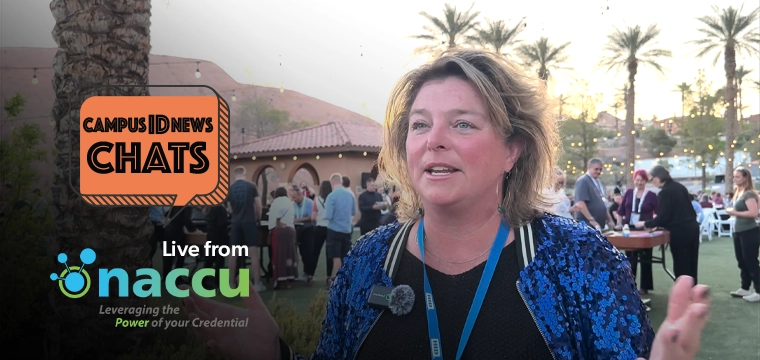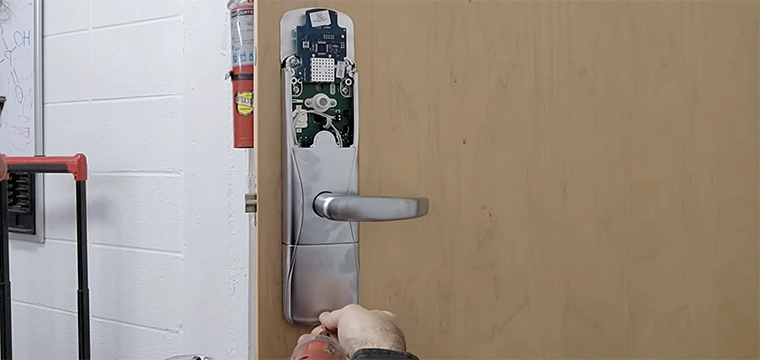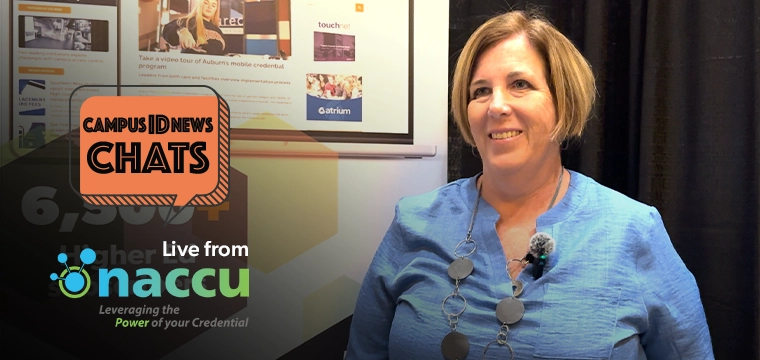CONTRIBUTED BY BILL REDWINE
AUXILIARY SERVICE DIRECTOR
MOREHEAD STATE UNIVERSITY
ID cards, meal plans, declining balance accounts, convenience copiers, lab printing, laundry services, vending machines and banking. How do we combine all of these varied services into one convenient and efficient card system? Our answer, the EagleCard.
In the early Fall of 2000, Morehead State University embarked upon the journey to establish the onecard concept with the EagleCard. A comprehensive RFP was compiled by a group of administrators from fiscal services, auxiliary services, information technology and the student body president. It was distributed to the major players in the campus card industry. Three (3) detailed proposals were received and the task of evaluation began. The committee had agreed in the beginning that our approach would be to use “smart card” technology in order to achieve the maximum flexibility. Two (2) of the proposals were for smart cards and they quickly became the finalists in the evaluation process.
Each proposal stood strong on its own merits with definite strengths and weaknesses. The Cybermark proposal was a very detailed and comprehensive document detailing the opportunities for a system where the vendor would provide offsite transaction processing. The Schlumberger proposal was equally detailed and comprehensive in showing a system that would allow for our card office to process all transactions in-house. This fact, combined with the utilization of Danyl equipment, led us to select their system for our particular application and needs.
By mid February 2001, the decision was nearly made. After careful evaluation of the capabilities of both systems, the committee visited Robert Morris College in Pittsburgh to view a Schlumberger system in action. This visit sealed the deal to select Schlumberger and upon our return to Morehead, the die was cast and the contract was signed. Now came the process of implementing a comprehensive system to address all of the University needs.
Our meal plan and declining balance system was already in place and being managed very effectively with a CBORD system administered by a very capable and energetic card office staff. The plan was to maintain this magstripe system while integrating the chip technology into the overall campus plan for vending, laundry, convenience copiers and printing on demand in the computer labs around campus. Plans were also being laid for adding the convenience of ATM service via the magstripe through a banking partner.
By mid June 2001, the schedule was in place to execute the installation of a completely new ID system, various card readers and multiple cash to card units, all to be operational by August 15, when the students would return for the Fall semester. Additionally, the schedule included recarding the entire campus community, which entailed the printing and distribution of nearly 9,000 ID cards to returning students, faculty, staff and incoming freshman. Our plan was that by mid August the system would be 100% complete and would include the banking services mentioned earlier.
In July, proposals were received from two (2) financial institutions for the banking component. After careful scrutiny, we came to terms with Firstar Bank (now called US Bank) and began the process of developing our ID system to produce smart cards that would include a magstripe for mealplans, declining balance and ATM network access. The ATM access was no small feat but was successfully accomplished by some very creative programming in our IT department with cooperation from the US Bank technology staff.
The installation and implementation of cardreaders came throughout the months of June, July and early August. A cooperative effort with Pepsi led to the complete conversion of drink vendors while the installation crew from Schlumberger attended to our snack machines since we own all of them ourselves. The installation of readers for copiers and print on demand systems was handled by Schlumberger and Xerox cooperatively. Our laundry provider, Automatic Apartment Laundries, provided the technical support to install all of the laundry rooms. By mid August we had seen a nearly flawless implementation of 200 washers and dryers, 32 snack machines, 68 drink machines, 12 convenience copiers and 6 computer labs.
During all of the installation process, we had also been testing the new ID production system and its ability to produce a smart card with a functioning chip and a magstripe. The magstripe would need to be encoded for both on-campus access via CBORD and ATM access via the US Bank network. Once the testing was complete and we were confident that all connections were made, we began the process of the on-site printing of new EagleCards for all returning students, faculty and staff and the new freshman, whose photos had been captured during our annual Summer Orientation and Registration (SOAR) program.
Because of the configuration of our mainframe system to store ID photo images for use on our web view, it was just a matter of pulling those photos by ID number and printing them on the new cards. Our original proposal from Schlumberger included this in the total package. After close scrutiny we determined that a more cost effective means was to use our own staff and equipment instead of shipping them to an off-site location to have them produced.
When August 15 (the opening of the Fall Semester) rolled around we were up and running with the new system, new ID’s and a new image. Through the cooperation and help from the local US Bank branch we were able to distribute nearly all of the new cards while maintaining our normal opening of school routine. Because of the advance programming and encoding for ATM access, US Bank was able to offer to the students and employees the opportunity to open a new bank account with their new EagleCard ID as their ATM card. At last report, US Bank had opened more than 1,000 new accounts and we have now implemented direct deposit of financial aid refunds and workstudy payroll to these accounts if the student so chooses.
With the system now in place and functioning successfully for just over one year, we have embarked on developing other applications for this onecard system. Our Information Technology department is currently developing a program to provide cardswipe verification for motorpool checkout of University vehicles for employees. Our campus police department will conduct driving history checks on anyone being authorized to use a University vehicle. Once that check is complete, the individual simply presents their EagleCard at the motorpool and the attendant will then swipe the card on a reader connected to their workstation to verify immediately if the individual is authorized to drive a vehicle.
One of the most exciting and versatile applications that we have developed is that of using a PDA equipped with a cardswipe to verify student status for access to special events and even mandatory educational sessions for fraternity and sorority members. The process is simple in that prior to the event we download the specific database to be verified (paid students, Greek memberships, faculty, staff, etc.) into a PDA that is loaded with the CardDB™ software from Tokenworks. As the individuals enter an event, their card is swiped and verification is instantaneous while the database is updated with the date and time of each swipe. Examples of this use currently in place include the “Free Movie Night” sponsored by our Student Government Association each Friday evening. A member of our Student Government Association stands at the entrance of a local theater and as students enter, they swipe their EagleCard ID for verification. If verified, they are given a coupon for one free ticket.
Our Greek Affairs Office also utilized this system to verify attendance at a mandatory workshop on “Risk Reduction” for fraternity pledges. As each pledge entered the auditorium, their card was swiped for verification. The following morning the data was uploaded to an Excel spreadsheet to verify which pledges had actually attended. To date, our largest application for this system was a recent concert sponsored by the Student Activities Council for which students could purchase tickets at a reduced rate. As they entered the arena, their EagleCard was swiped and if they were not identified as a currently enrolled student were sent back to the ticket window to purchase the higher priced ticket, thus generating several hundred dollars in additional ticket revenue which would have been lost otherwise. Current students were admitted without any further verification. The next morning, the upload produced more than 1,000 verifications of current students.
We feel that this is just the tip of the iceberg for us with new applications making the EagleCard even more functional. Who knows where the future might lead.
For more information on any of the information contained in this article please contact Bill Redwine, Director of Auxiliary Services, Morehead State University, Morehead, KY by email at [email protected].




